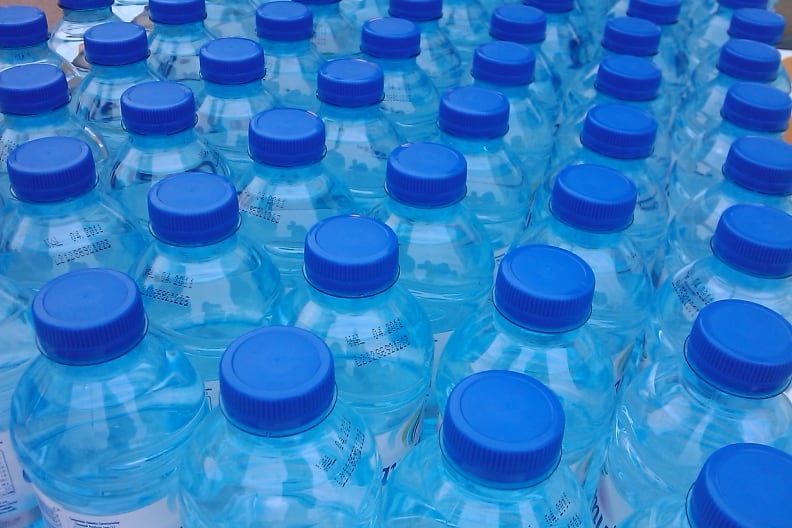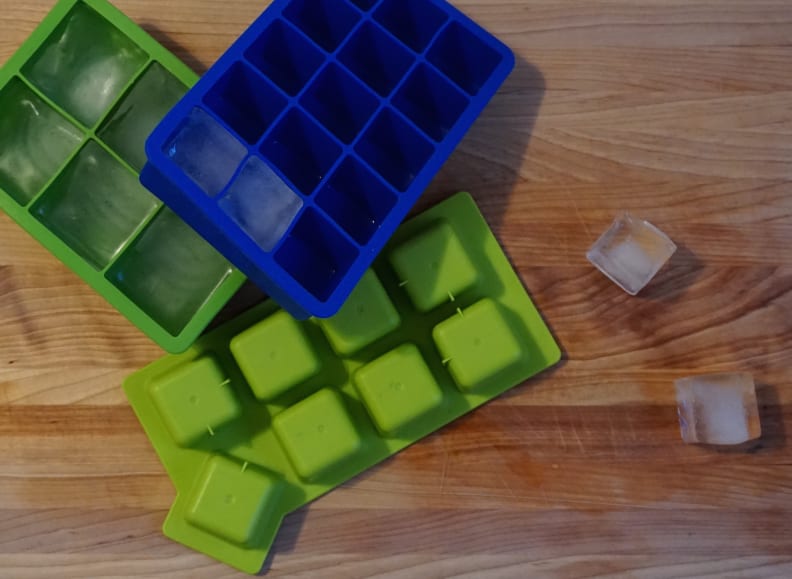 Credit:
Reviewed.com / Michael Desjardin
Credit:
Reviewed.com / Michael Desjardin
Recommendations are independently chosen by Reviewed's editors. Purchases made through the links below may earn us and our publishing partners a commission. Prices were accurate at the time this article was published but may change over time.
Like it or not, we live in the age of artisanal ice cubes. The fall of the bartender and rise of the mixologist has given way to a marketing onslaught of craft cocktail gadgetry, guidebooks, and glassware.
Nowhere is this phenomenon more apparent—and, perhaps, more ridiculous—than the up-and-coming world of high-end ice. Cut and clarity are no longer designations reserved for diamonds; we want our ice perfectly clear and perfectly cubed. There's an equal amount of sound science and highfalutin hype going on here: Not all of these gizmos are as gimmicky as you'd expect, but not all of them are as useful as they claim.
But if you're like me, you don't have the means or patience for a fancy ice maker. And, if you're like me, the refrigerator in your tiny apartment kitchen isn't churning out and dispensing its own ice. No, you make ice the old fashioned way—by shuffling across the kitchen with a tray full of water, silently praying that surface tension will keep your floor dry.
But maybe (again, if you're like me) you've quaffed down one too many odd-tasting cocktails and you want to know why your ice cubes impart an odd, plastic-like taste on every drink they touch. To find out, we'll have to do a little bit of troubleshooting.
Is it the water?

Avoid using tap water unless you really like the taste. Distilled bottled water or tap water run through a good filter will produce cleaner-tasting ice.
First things first: Empty your ice cube trays. Get rid of the stale ice (ice that's been hanging out in your freezer for too long), since it has likely picked up the odor of other items that share the space. Since it's probably tainted by external factors, it's of no use in figuring out what's wrong.
Next, forget about using tap water. You're probably well aware of the impurities found in the stuff you get out of your sink faucet, so fill your tray with filtered or bottled water.
Finally, fix up a beverage and give the new batch a swirl. If you're still noticing that old familiar taste, you can safely eliminate your water from the list of suspects.
Is it the tray?
Ice cube trays come in all kinds of shapes and materials, but whether they're plastic, silicone, or steel, they'll all spoil ice if you don't take care of them.

Ice cube trays come in all sorts of sizes, shapes, and materials, but if they're not properly maintained, the water on your nightstand will turn sour in no-time.
Empty your trays and clean them thoroughly. If you have a dishwasher and the trays are dishwasher-safe, send them through a cycle.
Make another batch of ice and test them out again. If you're still getting a soupçon of stinky artificiality, it's time to move on to the most labor-intensive stage of troubleshooting.
Is it the freezer?
The smells in your refrigerator and freezer can creep into the foods you store there, and since everything's so delightfully frozen, it's dangerously easy to let freezer cleaning fall by the frosty wayside. Don't neglect your freezer. Treat it with the same attentiveness you (hopefully) show your fridge, lest you welcome guests with tainted cocktails.
Not only will this exercise potentially lead to fresher-tasting ice, but it's a good habit to get into if you're serious about keeping your kitchen organized.
Here's how to handle it:
- Turn the freezer off.
- Empty the contents and sift through them, disposing of items that are freezer-burned. Place the remaining items in the fridge for the time being.
- Scrub down the inside of the freezer with hot water. If you're feeling adventurous (or if your freezer is in particularly bad shape) add baking soda to the water.
- Be sure to pay attention to any shelving, drawers, or compartments inside the freezer.
- Replace the contents.
- Turn the freezer back on.
At this point, you should have filtered water in clean ice cube trays, in a clean fridge. There's not much more you can do to get great-tasting ice. But with that said, you might also consider covering your trays with plastic wrap to give your cubes a little extra separation and a little extra longevity. Alternatively, covered trays provide a similar amount of protection and are available almost everywhere ice cube trays are sold.
Make one last batch of ice and send it through the ringer.
My ice is still gross.
Congratulations, you've got a haunted freezer. Consider exorcising your kitchen by picking up a new fridge or freezer, or learn to appreciate pre-packaged bags of ice and all that they have to offer.



